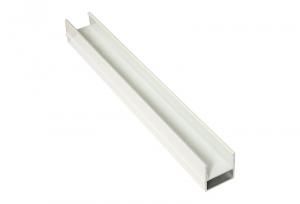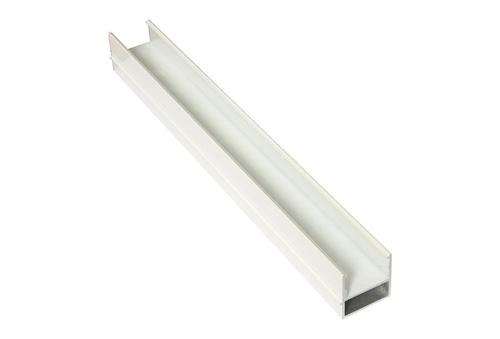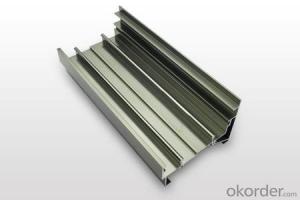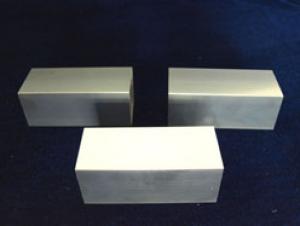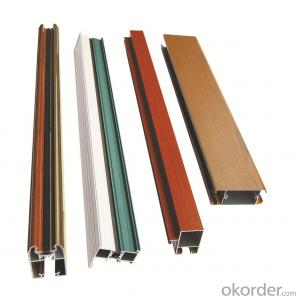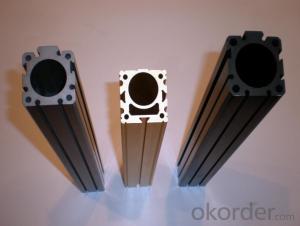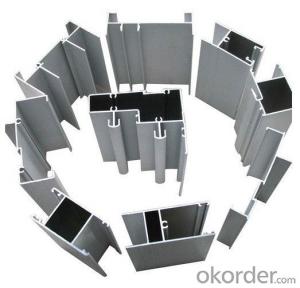White Color Aluminum Threshold Profiles
- Loading Port:
- China Main Port
- Payment Terms:
- TT OR LC
- Min Order Qty:
- -
- Supply Capability:
- -
OKorder Service Pledge
OKorder Financial Service
You Might Also Like
WHITE COLOR ALUMINUM PROFILE
Industrial aluminium profile
1)Material : 6063 6061 6060 and different aluminium alloy
2)Status:T4 T5 T6 or other special status
3)Surface treatment: mill finish, anodized sliver ,anodized bronze, anodized champagne, anodized black pearl, various power coating color, electrostatic sliver, electrostatic champagne, electrostatic golden, electrostatic titanium , machine polish sliver, machine polish bronze, wooden grain color, and Fluorocarbon spraying.
4)Annual capacity : 120000TON
5)Quality : China Nation Standard GB/T 5237 2008 (advanced class)
6)Use: can be widely using aluminium window, door, curtain wall, hand railing , normal aluminium profile, decorative and industrial aluminium profile
7)Advantage: Famous Brand reasonable&market price, soonest delivery and good after sale- service
8)Type of package:protection foam+heat contracted plastic film. / wooden packing / Metal pallet or depand on clientspecial requirement.
9)Payment term:T/T:30% of total value as deposite should paid by T/T within 3 days when confirmation ,and the remaining sum should be paid by T/T before delivery.L/C: 100% at sight
10)Delivery Day: 15-30days
11)Honor : CHINA FAMOUS TRADEMARK, CHINA TOP BRAND, ISO9001-2000, CHINA SQUARE&ROUND COMMITTEE DNV
- Q: What are the various types of connectors that can be used with aluminum profiles?
- <p>Aluminum profiles can be connected using a variety of connectors designed for different applications and structural needs. Common types include: 1. T-slots connectors, which slide into the T-slots of the profiles for secure attachment. 2. Angle connectors, used to join profiles at right angles. 3. Corner brackets, for creating 90-degree corners. 4. Clamping blocks, which hold profiles together without screws. 5. Hinges, allowing for pivoting movements. 6. End caps, to cover the ends of profiles. 7. Cylindrical connectors, for joining round tubes. 8. Linear connectors, for straight-line connections. 9. Specialized connectors for specific applications, such as cable management or mounting brackets. These connectors are crucial for assembling aluminum profile systems in various configurations.</p>
- Q: What are the different surface protection coatings for aluminum profiles?
- Aluminum profiles have a wide range of surface protection coatings available, each with unique benefits and applications. Here are some common options to consider: 1. Anodizing: Anodizing is a popular coating method that creates a protective layer on the aluminum surface. It improves corrosion resistance, durability, and aesthetics. Anodized coatings can be clear or colored, offering design flexibility. 2. Powder coating: For durability and versatility, powder coating is a preferred choice. This method involves electrostatically applying dry powder to the surface, which is then cured under heat to form a protective layer. Powder coatings provide excellent resistance to UV rays, chemicals, and scratches, along with a wide range of color options. 3. Liquid paint coating: Another option is liquid paint coatings, which involve applying a liquid paint to the surface and curing it to create a protective film. These coatings offer customization in terms of color and finish, allowing for specific design requirements. 4. E-coating: E-coating, also known as electrocoating or electrodeposition, utilizes an electric current to apply a paint or coating to aluminum profiles. This process ensures a uniform and consistent coating, resulting in excellent corrosion resistance and durability. E-coatings are commonly used in automotive and industrial applications. 5. Ceramic coatings: Ceramic coatings, a newer option, consist of inorganic materials that provide exceptional hardness, heat resistance, and chemical resistance. These coatings are ideal for enhancing performance and lifespan in harsh environments like marine or aerospace applications. When selecting a surface protection coating, it is essential to consider the specific requirements and intended use of the aluminum profiles. Factors such as corrosion resistance, durability, aesthetics, and cost should be taken into account to determine the most suitable option.
- Q: Can aluminum profiles be used in swimming pool enclosures or structures?
- Yes, aluminum profiles can be used in swimming pool enclosures or structures. Aluminum is a popular choice for constructing swimming pool enclosures due to its excellent corrosion resistance and durability. It is resistant to rust and degradation from exposure to water and chlorine, making it ideal for use in a pool environment. Additionally, aluminum profiles can be easily shaped, welded, and installed, allowing for the construction of custom-designed enclosures that meet specific requirements and aesthetics. They are also lightweight, which makes them easier to handle and transport during installation. Overall, aluminum profiles offer a reliable and long-lasting solution for swimming pool enclosures or structures.
- Q: Are aluminum profiles suitable for awnings and canopies?
- Yes, aluminum profiles are highly suitable for awnings and canopies. Aluminum is a lightweight yet durable material that is resistant to rust and corrosion, making it ideal for outdoor applications. It is also highly customizable, allowing for various shapes and sizes to be easily achieved. Additionally, aluminum profiles can be powder-coated to provide additional protection against the elements and enhance their aesthetic appeal. Overall, aluminum profiles offer a strong and versatile solution for constructing awnings and canopies that can withstand different weather conditions while providing shade and protection.
- Q: Can aluminum profiles be used for furniture?
- Indeed, furniture can indeed be constructed using aluminum profiles. Aluminum, a flexible and light material, is often employed in furniture manufacturing. It presents numerous benefits, including resistance to corrosion, durability, and easy maintenance. It is possible to create various furniture pieces, such as tables, chairs, shelves, and cabinets, using aluminum profiles. These profiles can be conveniently customized and molded to adhere to specific design specifications. Moreover, they can be powder-coated or anodized to offer a decorative and enduring surface. All things considered, aluminum profiles are widely favored for furniture due to their robustness, adaptability, and visual charm.
- Q: Can aluminum profiles be recycled indefinitely?
- Aluminum profiles possess the remarkable ability to be recycled endlessly. Unlike other materials, aluminum remains intact throughout the recycling procedure, allowing it to be melted and molded into fresh profiles without forfeiting its inherent qualities. Consequently, aluminum profiles enjoy an eternal life cycle. Opting for aluminum recycling proves to be an environmentally sustainable choice as it demands considerably fewer resources and energy than the production of new aluminum. Furthermore, the recycling process can be performed indefinitely without compromising the quality, rendering aluminum among the most frequently recycled substances globally.
- Q: What are the different extrusion methods used for aluminum profiles?
- There are several different extrusion methods used for aluminum profiles, including direct extrusion, indirect extrusion, impact extrusion, and hydrostatic extrusion. Each method has its own advantages and is suited for specific applications. Direct extrusion involves pushing the aluminum billet through a die to create the desired shape, while indirect extrusion involves the billet being held stationary and the die moving towards it. Impact extrusion involves forcing the aluminum into a die cavity using a high-velocity impact, and hydrostatic extrusion uses high-pressure fluid to push the aluminum through the die.
- Q: What are aluminum profiles used for?
- Aluminum profiles are used for a wide range of applications across various industries. One of the primary uses of aluminum profiles is in construction and architecture. They are commonly used in the framing of windows, doors, and curtain walls due to their lightweight yet sturdy nature. Aluminum profiles are also used in the construction of modular structures, such as exhibition stands, trade show booths, and temporary shelters. In the automotive industry, aluminum profiles are utilized for manufacturing components such as vehicle frames, roof rails, and trim parts. The lightweight properties of aluminum make it an ideal choice for improving fuel efficiency and reducing overall vehicle weight. Another significant application of aluminum profiles is in the production of industrial machinery and equipment. These profiles are used for constructing machine frames, conveyor systems, and assembly lines. The versatility of aluminum profiles allows for easy customization and modification to meet specific industrial requirements. Additionally, aluminum profiles find extensive use in the manufacturing of furniture and interior design. They are widely employed for constructing shelving units, workstations, display cabinets, and partitions due to their aesthetics, durability, and corrosion resistance. Furthermore, aluminum profiles are extensively used in the electrical and electronics industry. They are used for manufacturing heat sinks, enclosures, and mounting brackets. The excellent thermal conductivity of aluminum helps dissipate heat effectively, making it an ideal choice for electronic devices. Overall, the versatility, lightweight nature, corrosion resistance, and ease of customization make aluminum profiles highly sought after in numerous industries, offering a wide range of applications in construction, automotive, machinery, furniture, and electronics sectors.
- Q: Can aluminum profiles be used for access control systems?
- Yes, aluminum profiles can be used for access control systems. Aluminum is a versatile and durable material that is commonly used in construction and various industries. It offers excellent strength-to-weight ratio, corrosion resistance, and can be easily shaped and fabricated. When it comes to access control systems, aluminum profiles can be utilized for the construction of doors, frames, and enclosures. These profiles can be designed to accommodate various components such as locks, hinges, control panels, and readers. The lightweight nature of aluminum makes it suitable for door and frame construction, as it allows for easy installation and maintenance. Additionally, aluminum profiles can be finished with different coatings to enhance their appearance and protect them from harsh environmental conditions. Anodizing, for example, can provide a durable and corrosion-resistant surface that can withstand constant use and exposure to the elements. Furthermore, aluminum profiles can be customized to meet specific design requirements. They can be easily cut, drilled, and assembled, allowing for flexibility in creating access control systems that fit the desired aesthetics and functionality. In summary, aluminum profiles are a suitable choice for access control systems due to their strength, lightweight nature, corrosion resistance, and versatility in design. They offer durability and can be easily customized to meet specific requirements, making them a reliable and practical option for securing access points.
- Q: The user is asking if it's possible to use recycled aluminum to create new aluminum profiles.
- <p>Yes, recycled aluminum can be used to produce new aluminum profiles. The process of recycling aluminum is energy-efficient and environmentally friendly, as it requires significantly less energy compared to producing aluminum from raw materials. Recycled aluminum maintains the same properties as new aluminum, making it suitable for manufacturing various aluminum profiles. The recycling process typically involves melting the aluminum, which can then be cast into new shapes and forms, including profiles for construction, automotive, and other industries. This not only conserves resources but also reduces waste and carbon emissions.</p>
Send your message to us
White Color Aluminum Threshold Profiles
- Loading Port:
- China Main Port
- Payment Terms:
- TT OR LC
- Min Order Qty:
- -
- Supply Capability:
- -
OKorder Service Pledge
OKorder Financial Service
Similar products
Hot products
Hot Searches
Related keywords
